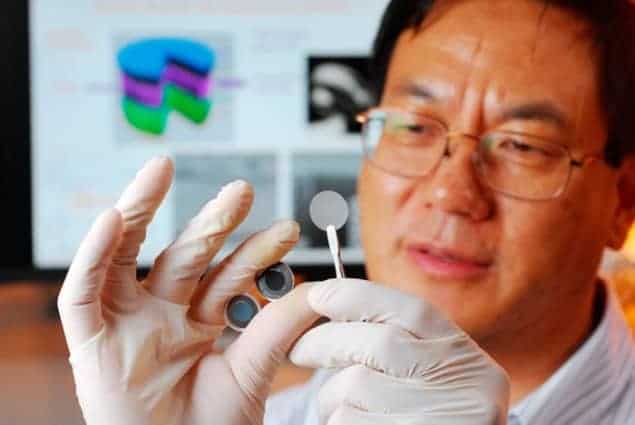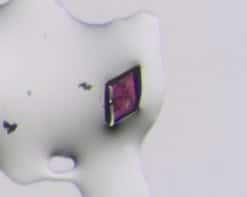
Researchers in the US have created a power cell that directly converts mechanical energy to chemical energy, which can then be stored and converted to electrical energy upon demand. This new system is unlike other similar technologies that first convert mechanical energy to electrical energy, which is then stored chemically. By skipping the intermediate conversions, the team says that the system is more efficient. If the technology could be further improved, it could be used, for example, in the sole of a shoe, where it could charge a mobile-phone battery while the wearer is walking.
We are using an increasing number of portable electronics every day and keeping all these devices charged can be a challenge. This is particularly difficult for infantry soldiers, who can operate for long periods of time away from reliable sources of electricity and therefore have to carry large numbers of batteries to keep communications, GPS and other devices running. As a result, researchers around the world are working on systems that can generate electricity from routine body motion. Footwear is an obvious place to start because soldiers do lots of walking and a small amount of energy could be extracted from each step by placing a generating device in the sole of a boot or shoe.
Hybrid approach
Several different approaches to shoe power are already in development, and now Zhong Lin Wang and colleagues at the Georgia Institute of Technology have created a new technology in which generation and storage occurs within a single unit.
Their cell comprises a cathode made of lithium cobalt oxide and an anode of titanium-dioxide nanotubes that are grown perpendicular to a titanium surface. The electrodes are separated by poly(vinylidene fluoride) (PVDF) film, which is a piezoelectric material. When the cell is compressed, the PVDF creates a piezoelectric charge, which drives lithium ions from the cathode to the anode. This converts electrical energy to chemical energy, which is stored in lithium titanium oxide. When the compressing force is removed, the cell relaxes but the chemical energy remains stored. More energy can then be stored in successive compression cycles. This energy can then be retrieved as electrical energy by connecting an electrical load between the anode and cathode, allowing the lithium ions to flow back to the cathode, and the device is ready to be charged again.
Powering a calculator
Using repeated compressions at a frequency of 2.3 Hz, the team was able to increase the voltage across the cell by about 60 mV in 4 min. The cell could then deliver a 1 mA current for about 2 min. While this represents a tiny amount of energy when compared with what is needed to charge a mobile-phone battery, the team used several cells connected in series to run an electronic calculator for about 10 min.
To show that their integrated design was more efficient than separate generation and storage, the researchers also created devices in which similar components were used to first generate electrical energy and then use that energy to move ions in a separate cell. Such a system developed less than 5 mV in 4 min when subjected to the same compressions.
While the technology is still in a very early stage, Wang believes that there are several ways that its performance can be boosted. For example, the researchers believe that most of the mechanical energy of compression is being dissipated in the cell’s coin-like steel shell, rather than in the PVDF film.
“When we improve the packaging materials, we anticipate improving the overall efficiency,” explains Wang. “The amount of energy actually going into the cell is relatively small at this stage because so much of it is consumed by the shell.”
The research is reported in Nano Letters.



